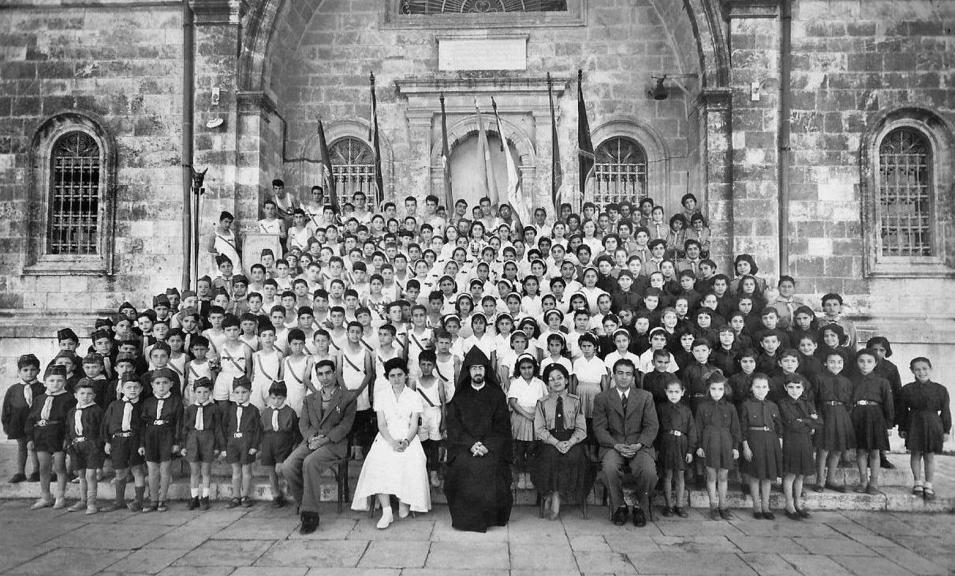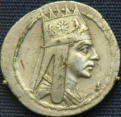

Armenian Jerusalem


The Armenian Patriarchate of Jerusalem and the Calouste Gulbenkian
philanthropic foundation have pledged to support of efforts to preserve the
history and culture of the Armenian community of the Old City.
The kaghakatsis, an appellation that denotes the centuries-long tenure of their sojourn in Jerusalem (unlike their "Vanketsi" cousins who sought refuge in the city during the massacres and settled in the Convent of St James), have amassed a vast treasure trove of history as they enriched the city's unique fabric with their manifold contributions. But despite their prowess in the arts and crafts, they left little records of their achievements or even their existence. In recent years, the kaghakatsis have been succumbing to the relentless encroachment of attrition, and community elders fear that unless prompt measures are taken to preserve records of their passage, their memory will be lost and will become nothing more than a faint footnote in the annals of the Holy Land. The Armenian Patriarch of Jerusalem, Archbishop Torkom Manoogian, who has spent a lifetime championing Armenian literary and cultural causes, is fully aware of the plight of his kaghakatsi congregation and keen to prevent such a catastrophe. He wants to ensure that the history of Armenian Jerusalem is engraved in the memory of mankind for all eternity. The Gulbenkian Foundation, which has been the Patriarchate's stauchest supporter ever since it was set up by Calouste Gulbenkian (Mr Five Percent, an allusion to his 5% interest in the Iraqi Petroleum Company), helping build and endow the Tarkmachatz parish school and the Gulbenkian library, has told organizers it recognizes the vital need for preservation efforts to succeed. The efforts are being spearheaded by the kaghakatsi Armenian Family Tree Project. While the Patriarchate will assist in the computerization of kaghakatsi genealogical records, the Foundation will donate the hardware and software necessary to complete the project. The Family Tree enterprise was launched a year ago, and ever since then the Patriarch has been following its progress closely. Project organizers state that without the support of the Jerusalem Patriarchate, the project would not get off the ground, particularly since St James is the repository of several centuries of genealogical information on the kaghakatsi Armenians. The Patriarchate archives contain ledgers detailing the births, baptisms, marriages and deaths of all Armenians in Jerusalem. The records are enshrined in several old, "oversize ledgers with oversized pages," as Joyce Sulahian, assistant to the Patriarch, observes. According to her, the ledgers have become brittle with time, the writings sometimes obscured and illegible. "The records are not alphabetized or organized in any way to facilitate quick searches," Sulahian says, an observation seconded by David Kaplanian of the Patriarchate "Tivan" (secretariat). Kaplanian should know. He is reportedly the most familiar with the material, spends long hours searching to find necessary information when needed, Sulahian says. She notes that the handwriting, in faded ink, is often indiscernible. While most names are entered in full, some entries refer to people in what Sulahian says "a cryptic manner." Instead of a family name, what we have is a nickname, as in "Bulghurji Hagop". The tradition has survived to this day, for the Armenians of Jerusalem have inherited it and have become adepts at this proclivity to attach descriptive or revealing nicknames to people. Typically, most of the epithets are Arabic not Armenian. Because of his kindly nature, Hovsep Toumayan becomes "Yousef el Hanoun." and he would henceforth be known by that appellation only, his real name consigned to oblivion. A long-story teller becomes "Abul Haul" (a reference to the Arabic name of the Sphinx). The courtyard populated mostly by old folk becomes known as "Dar el 'Ajayez," or house of the old. The wool merchant Apraham is better known as "Ibrahim bayya' el souf." Khatcho Kevorkian is so tall only one epithet would fit him: "Abu Tarou'," and a man overly concerned over hygiene is dismissed as "Sawabini" (derived from the word for soap in Arabic). The project organizers would like to computerize all the information in the ledgers, but the task of copying those pages seems daunting. The online project, a non-profit enterprise (located at http://armenian-jerusalem.org ) whose primary aim is to preserve the history and culture of the Armenian community and create an all-in-one family tree encompassing the kaghakatsi who have been living in the Armenian Quarter of the Old City of Jerusalem, for over a millennium. Over the centuries, the Armenians enriched the Holy City's multifaceted ethnic and social fabric with a proliferation of talent, vision and hard work, creating a unique culture and identity, unlike any other in the diaspora. Their ancestors were great teachers, artists, goldsmiths, carpenters, story-tellers and family men, but they were poor record keepers. Except for a register of births, deaths and certificates maintained by the Armenian Patriarchate of St James in the city, and some family heirlooms, we possess no archives or documents detailing their way of life, other than word- of-mouth accounts. "True, little has changed in the Old City over the centuries, but memories also dim," organizers say, adding "the next generation of kaghakatsis may wonder where on earth did they come from, who were the kaghakatsis, what made them run?" "The armenian-jerusalem.org project will ensure that their history will not remain forgotten, nor their songs unheard or their story untold," they say.

Our future























